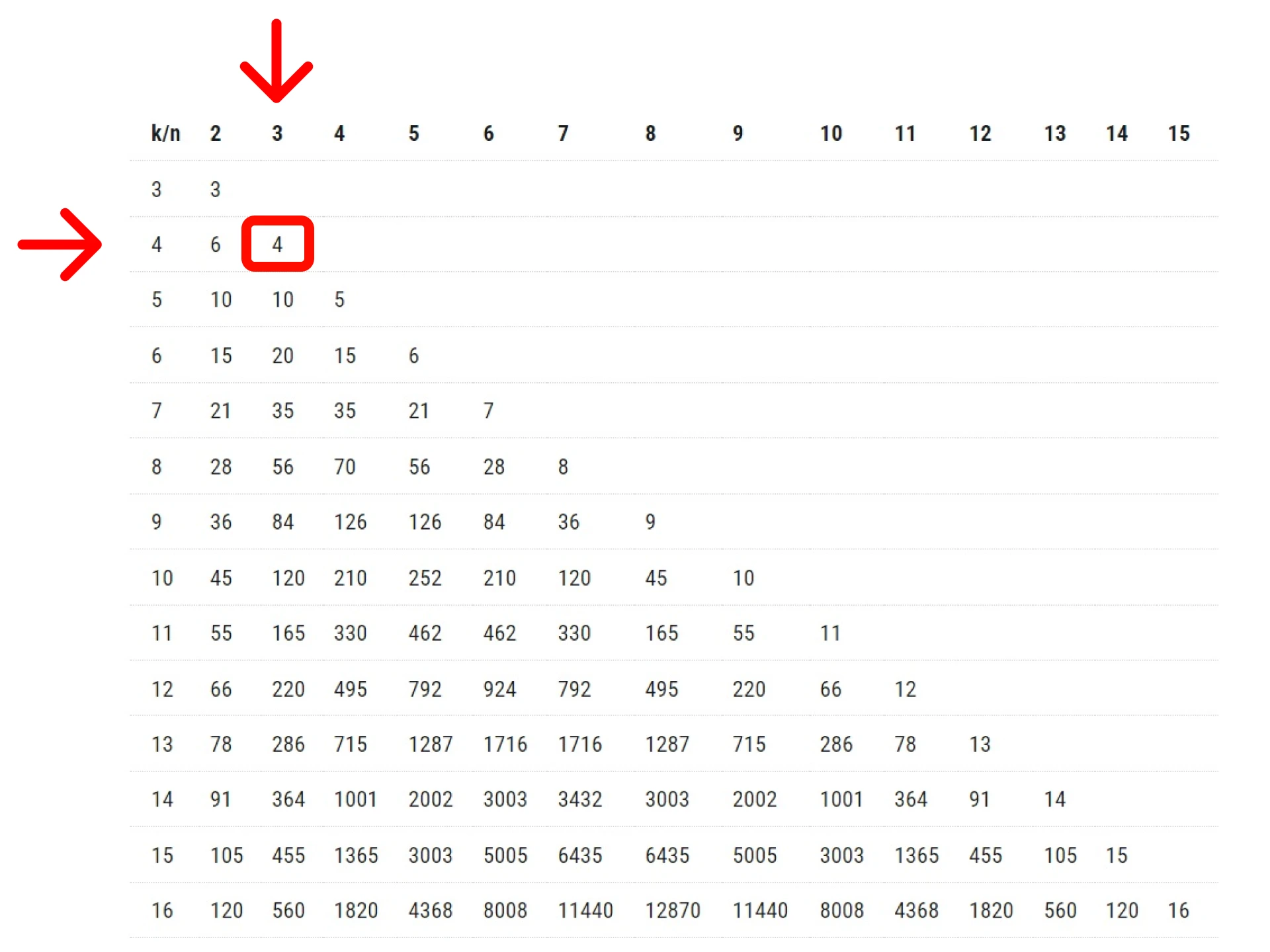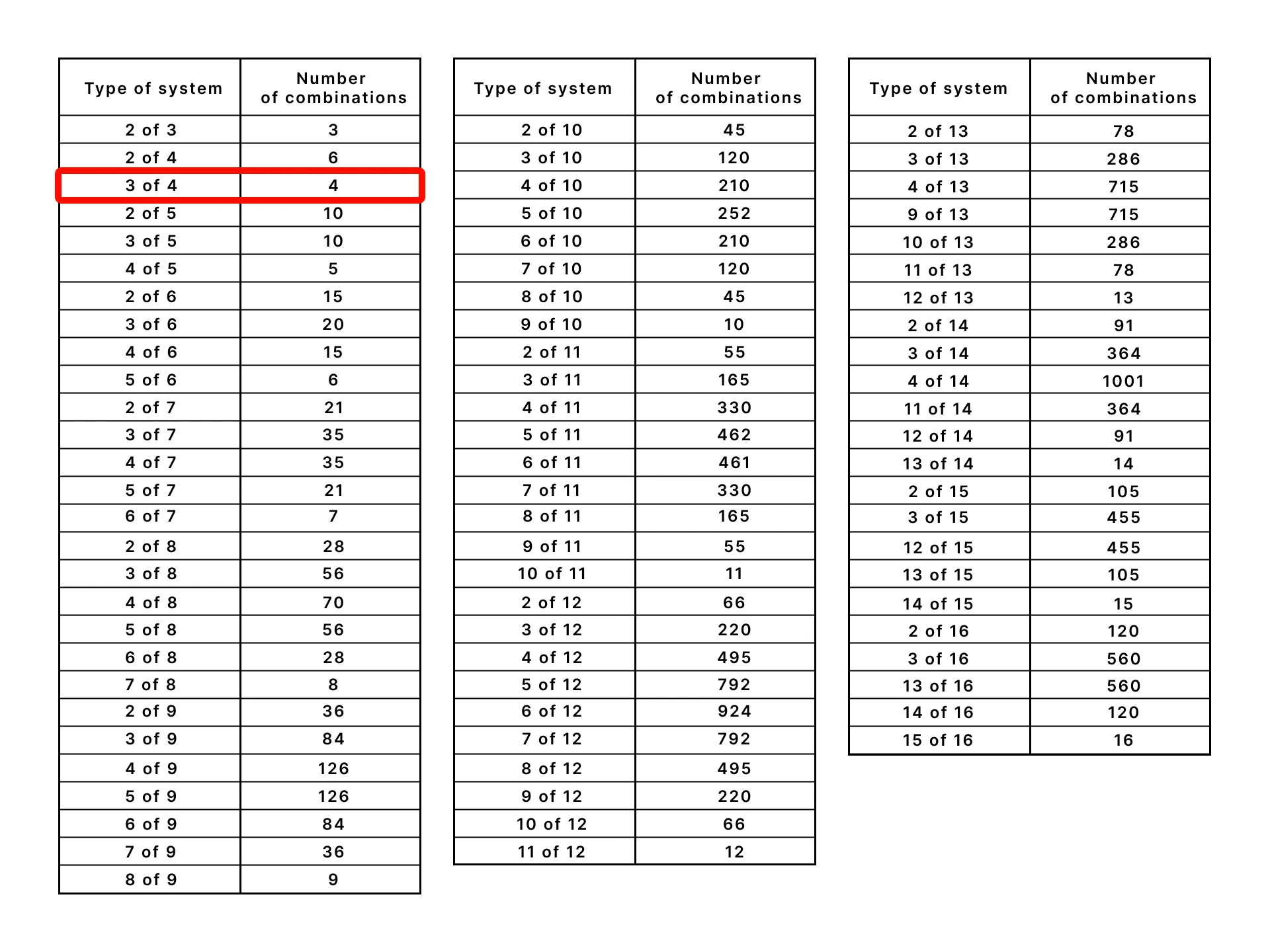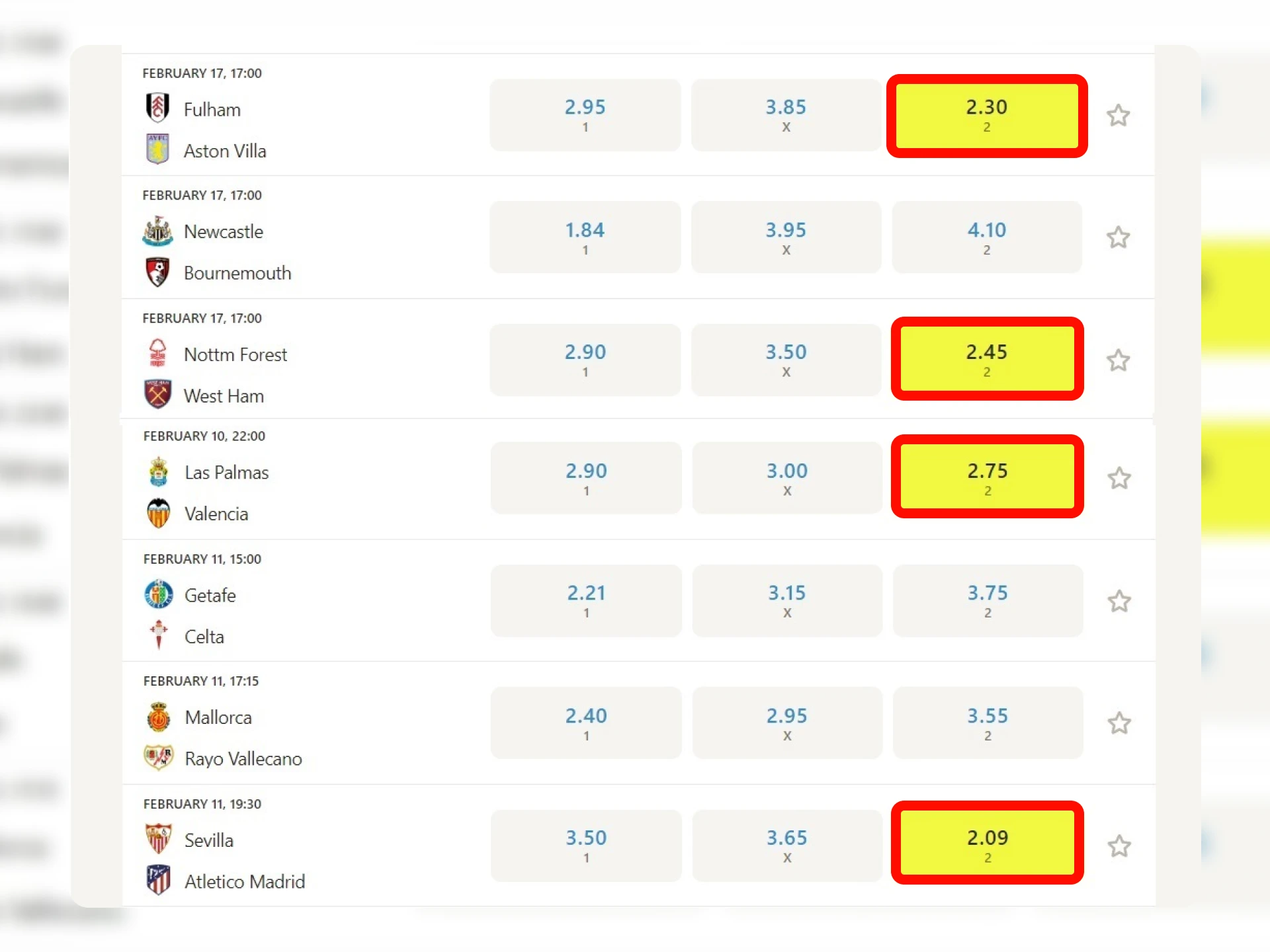Updated:
Difference From a Parlay and the Principle of Formation
Just like a parlay consists of several singles, a system consists of several parlays. The name of such a bet includes two numbers, for example, “3 out of 4”, which is deciphered as follows:
- The first number “3” — the number of events comprising each of the parlays;
- The second number “4” — the number of outcomes — parlays, from which the system consists.
The combination of events and outcomes can vary widely. It is expressed in the form of a table. Where vertically (the first column of the table) the total number of events/outcomes chosen by the player is indicated. Horizontally (the header of the table), the number of sporting events in each of the parlays is specified. The intersection will be the number of options (parlays) from which the bet “system” will consist.
IMPORTANT! The 3 out of 4 system will be considered successful if at least 3 out of 4 outcomes are successful. Then, 1 of the 4 parlays that make up the system will win.

To determine the number of combinations, you can use another, more understandable table.

Calculation Example
Example calculation: For example, let’s choose the following football matches with the following odds:
- First outcome: Fulham – Aston Villa — for Aston Villa to win 2.30;
- Second outcome: Nottm Forest – West Ham — for West Ham to win 2.45;
- Third outcome: Las Palmas – Valencia — for Valencia to win 2.75;
- Fourth outcome: Sevilla – Atletico Madrid — for Atletico Madrid to win 2.09.
Forming four parlays from these outcomes occurs as follows:
- First parlay: Aston Villa 2.30 – West Ham 2.45 – Valencia 2.75;
- Second parlay: Aston Villa 2.30 – West Ham 2.45 – Atletico Madrid 2.09;
- Third parlay: Aston Villa 2.30 – Valencia 2.75 – Atletico Madrid 2.09;
- Fourth parlay: West Ham 2.45 – Valencia 2.75 – Atletico Madrid 2.09.
The coefficients for each of the parlays will be as follows:
- First parlay: 2.30 x 2.45 x 2.75 = 15.5;
- Second parlay: 2.30 x 2.45 x 2.09 = 11.8;
- Third parlay: 2.30 x 2.75 x 2.09 = 13.2;
- Fourth parlay: 2.45 x 2.75 x 2.09 = 14.1.
The sum that the player bets on the system is evenly distributed among all the parlays. Therefore, if a bet of 400 rupees is placed on the “3 out of 4” parlay, then 100 rupees will be placed on each parlay.
If all the matches are played, the maximum win will be as follows:
1550 + 1180 + 1320 + 1410 = 5460 rupees.
If one of the outcomes does not come through, for example, if Aston Villa loses, then all parlays including this event will not be successful. Thus, the win of the system will only include the West Ham 2.45 – Valencia 2.75 – Atletico Madrid 2.09 parlay with the coefficient of 14.1, resulting in a win of 1410 rupees.

General and Specific Limitations
The rules and restrictions that govern the formation of a system can be divided into two main categories: general — followed by all bookmakers, and specific — which individual bookmakers may introduce on a permanent or temporary basis.
General rules:
- The minimum number of outcomes for both sporting events and combinations comprising the system must be at least three;
- In one coupon, there cannot be any sporting events related to each other in any way, let alone duplicating outcomes.
Specific rules:
- The maximum number of sporting events that can be used to form the system;
- Restriction on the maximum coefficient of winnings;
- Limitation on the number of parlays;
- Minimum bet amount.
Advantages and Disadvantages
The system can be characterized by the following advantages and disadvantages:
Advantages:
- A bet can win even if several outcomes are not predicted correctly;
- The risk of losing money is minimized if the coefficients are chosen correctly.
Disadvantages:
- Complex calculation, especially for systems with a large number of outcomes: 4 out of 9, 13 out of 16, etc.;
- The maximum winning coefficient is lower than that of a parlay with the same number of events;
- It’s impossible to predict the exact payout until all the parlays are played;
- With multiple errors that nullify most parlays, the winnings may be lower than the initial bet;
- The system has a high margin.
In Conclusion
The practice shows that the complexity of the system is quite relative. Calculating simple bets like 3 out of 4, 4 out of 5, 5 out of 6, and others, where the number of combinations does not exceed 10, is quite manageable even for beginners. However, it is recommended to move on to more complex systems only after gaining experience with simpler ones.
Learn More




Comments